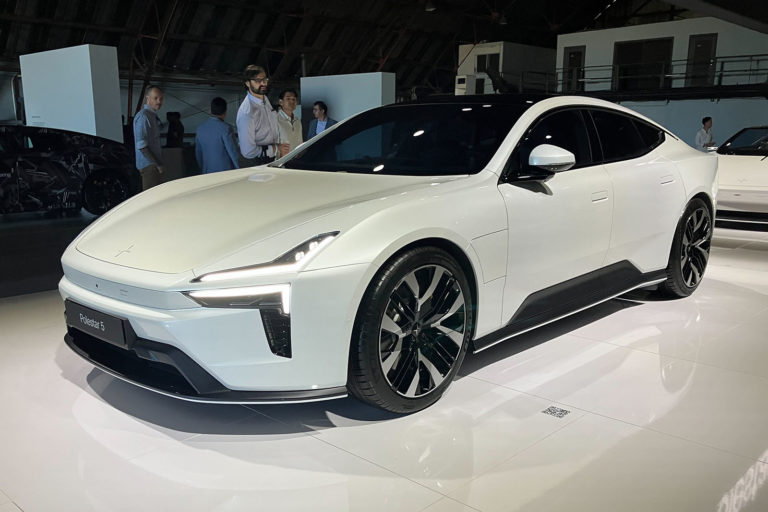Getting something so rippling with torque, and with such a long wheelbase, to behave like this isn’t hard, but what’s surprising – and noticeable even from the passenger seat – is the sense of finesse. Pedigree, even.
Perhaps this isn’t too surprising, either, given the 5 is being developed not from an existing Volvo platform at Polestar HQ in Gothenburg, or in China, where it’ll be assembled. Instead, it’s being brought to life here at MIRA, from scratch, by a predominantly British team of engineers with backgrounds at Lotus and McLaren, among other AAA-grade handling schools – and it shows.
The way the 5’s tail moves out of line then slips back in is, sorry for the cliché, buttery. This purely rear-driven example also seems the forgiving sort. Baguley can boot it mid-corner, when we’re already very sideways, and on its bespoke Michelins the 5 – sustaining yaw all the way – punches out of medium-speed bends at a rate you’d be happy even were you not frittering drive away by showboating. The 5 feels hooked up, composed, and on the way into bends resists understeer better than expected.
Concrete technical details about the 5 are currently scarce and will remain so until we’re closer to the car’s 2025-model-year launch. However, beyond a BMW M-car-esque penchant for oversteer, our passenger ride unearths some intriguing elements as well as giving a fair glimpse of the car’s broader character. One unexpected thing is that the 5 will ride on a passive suspension set-up – no, no air springs here, or even selectable modes.
This feels like a big call for a car with what will surely be a six-figure price, though on the far from smooth Dunlop circuit, the 5 does show a natural poise with good suppleness. Potholes and poor roads will be harder to subdue.


